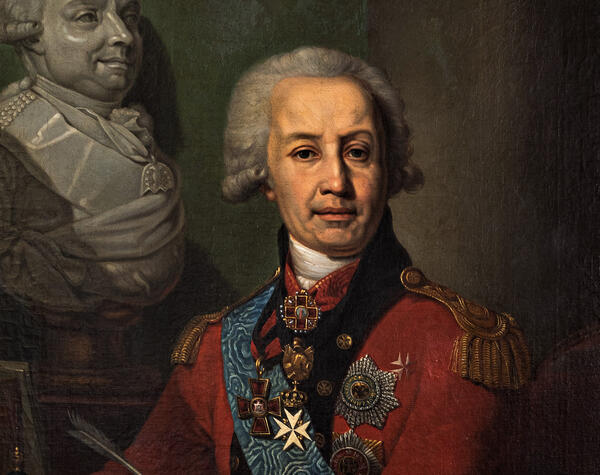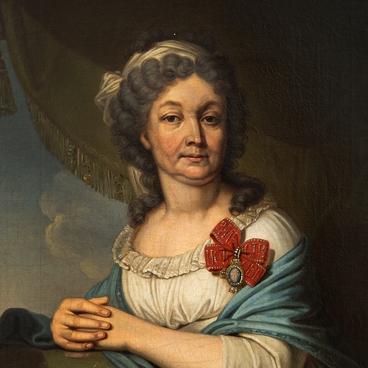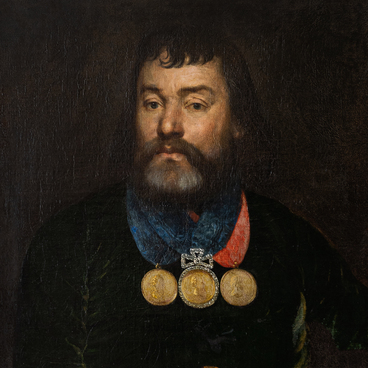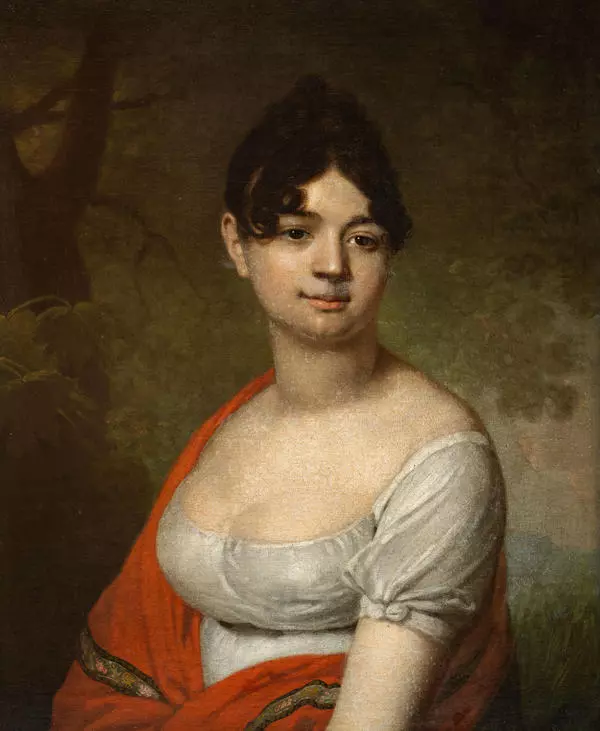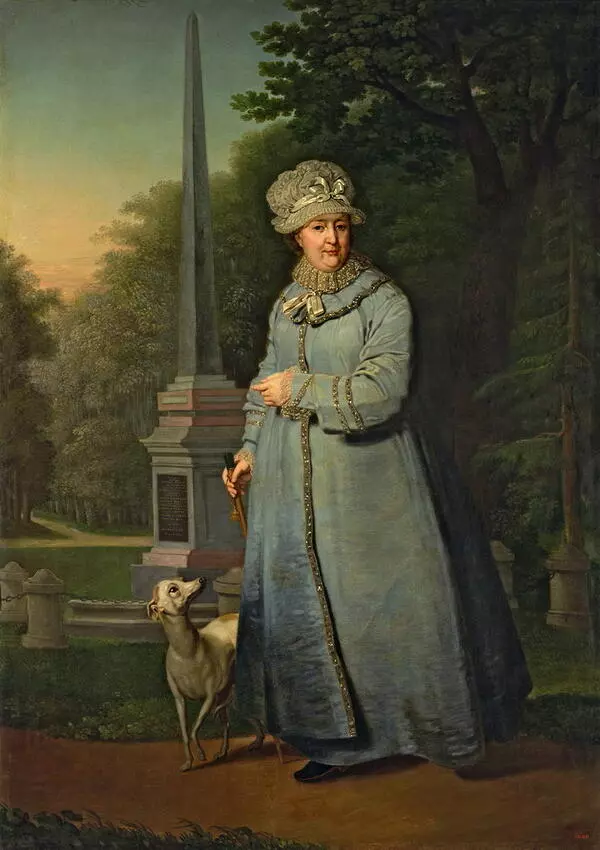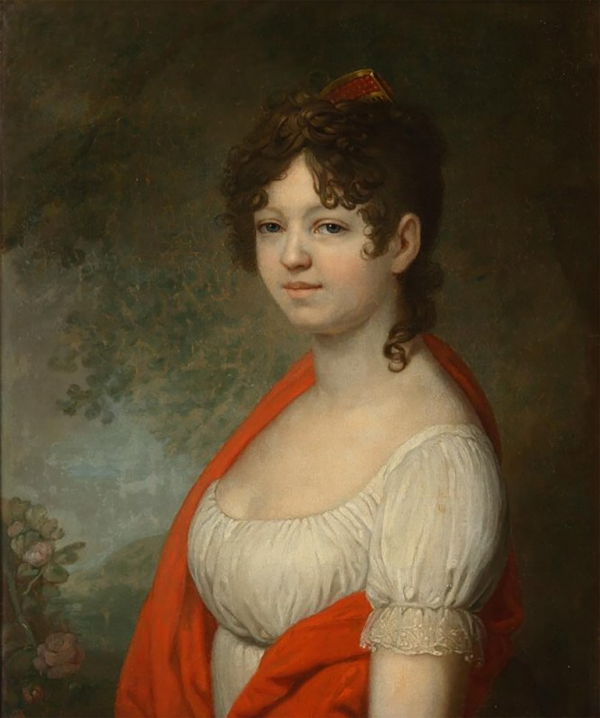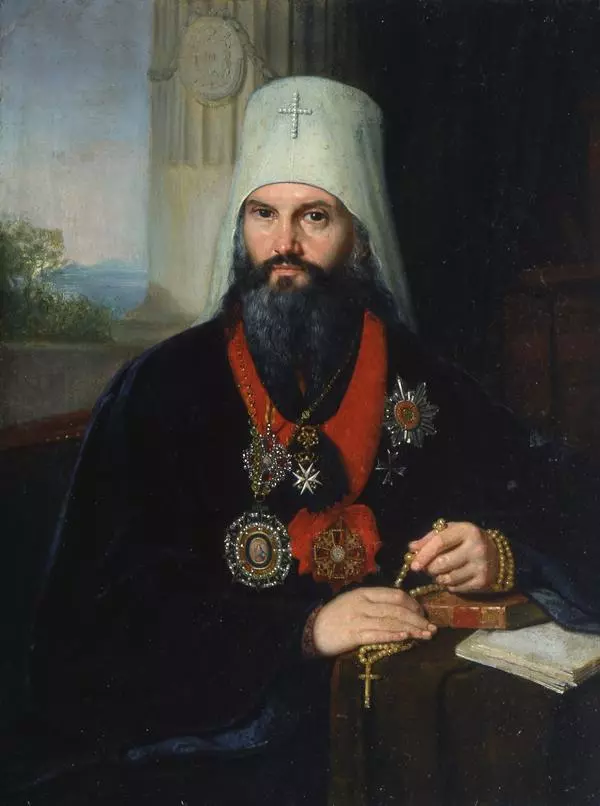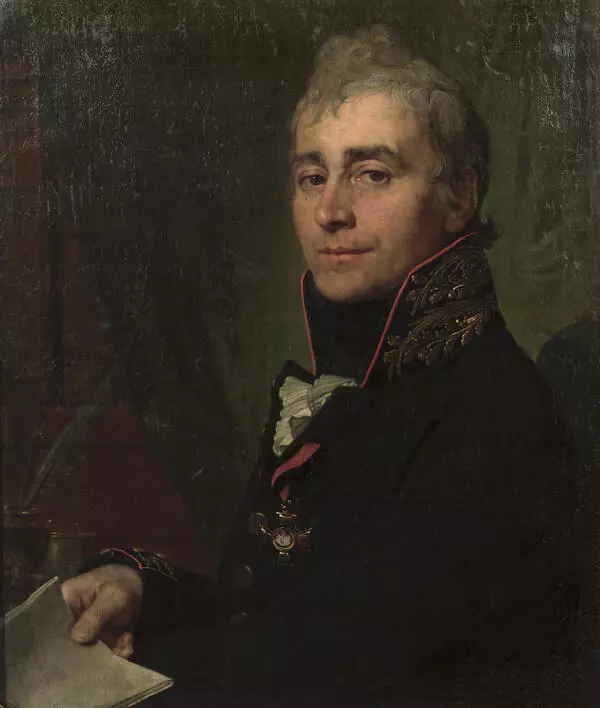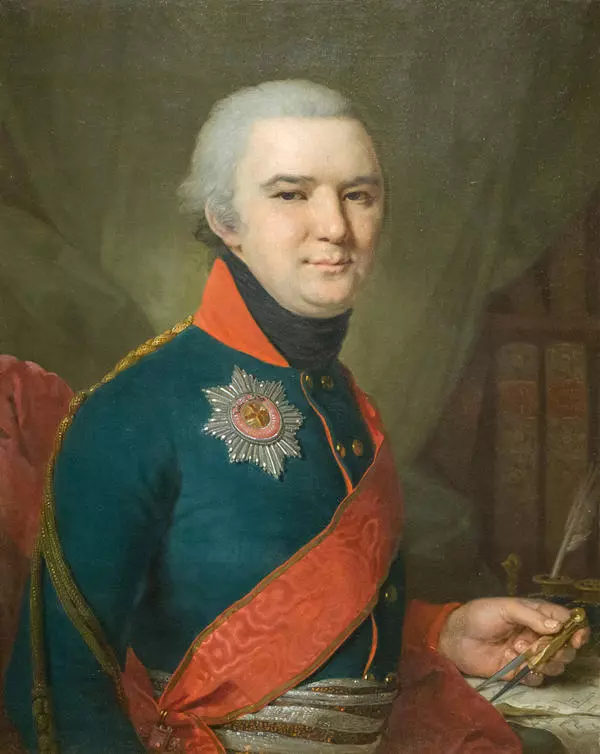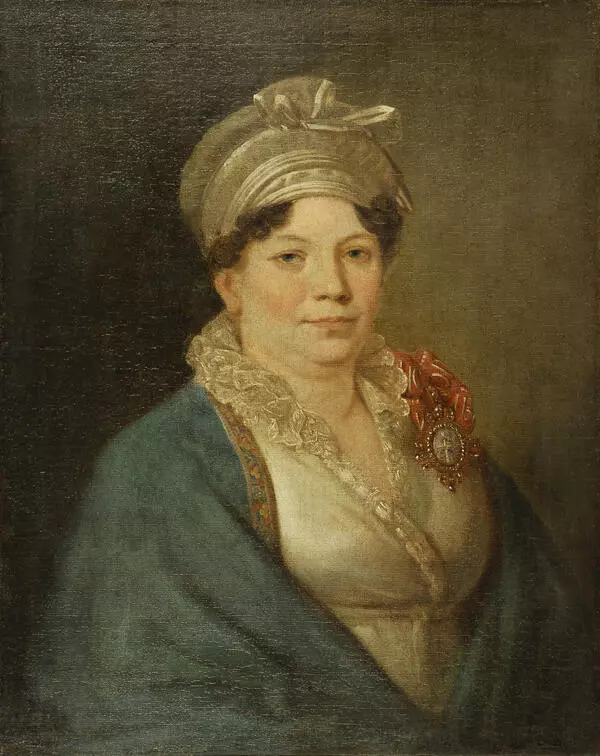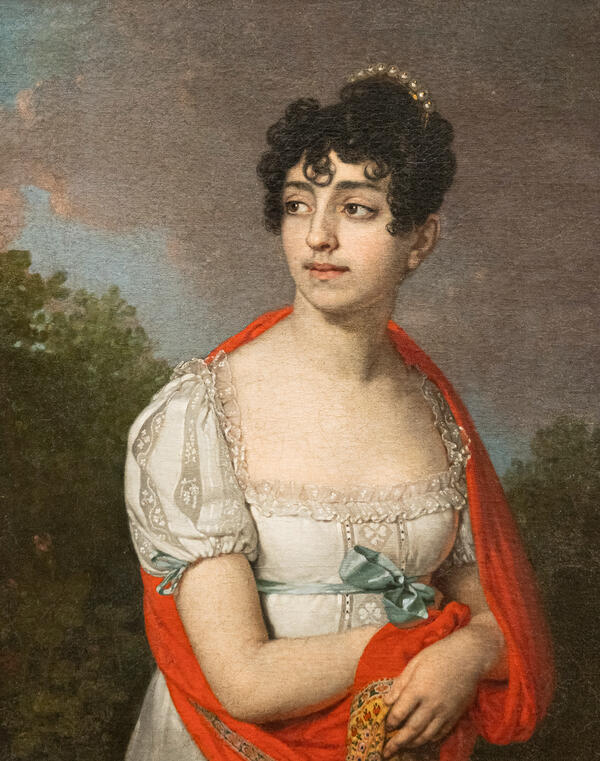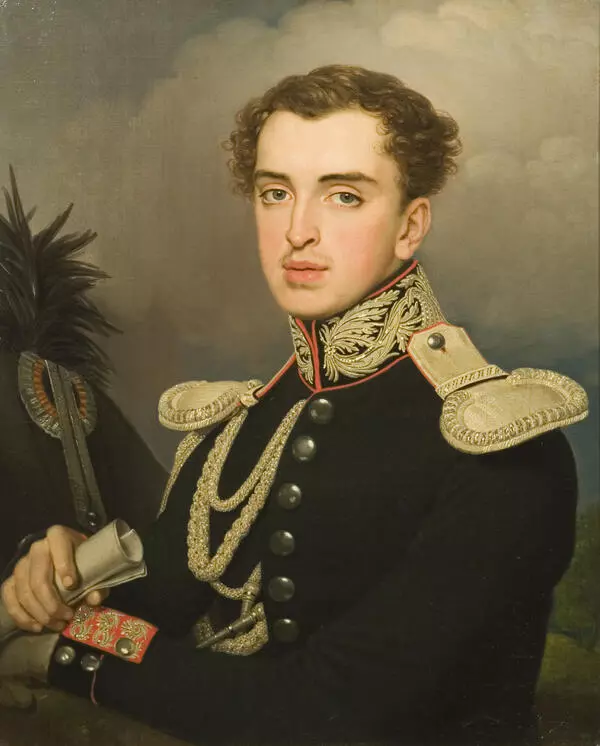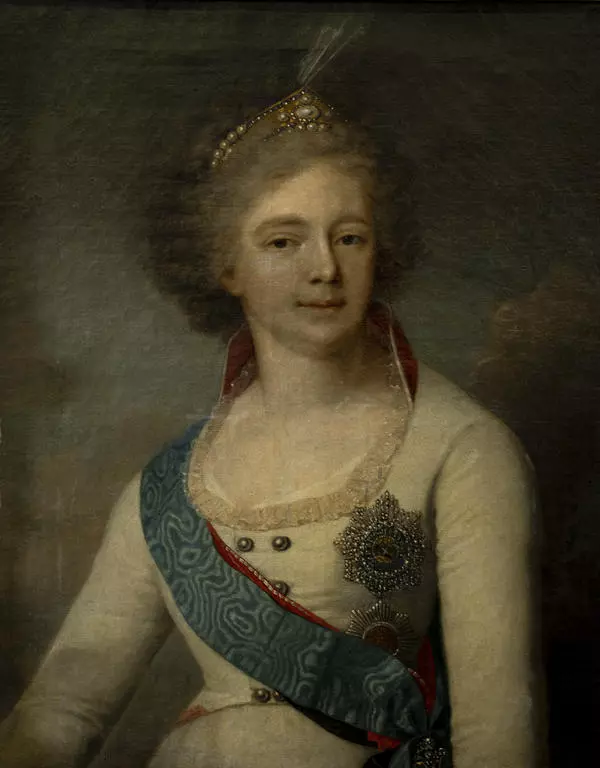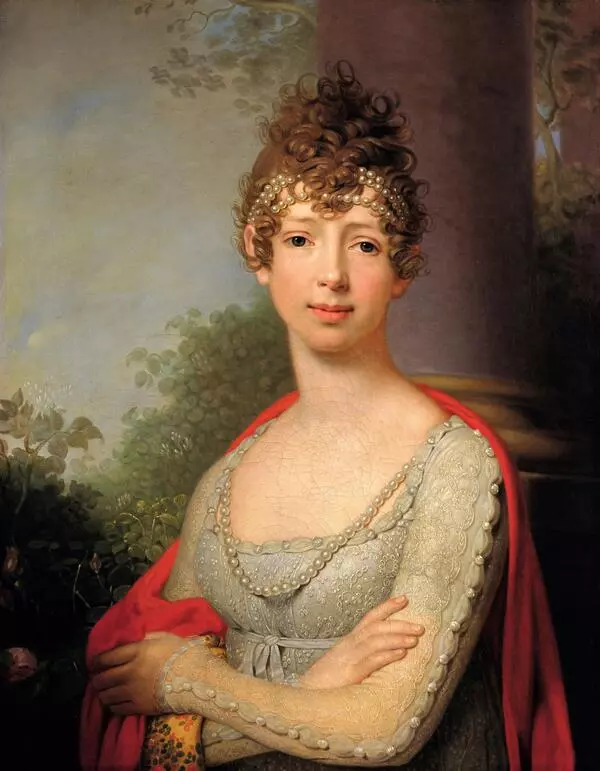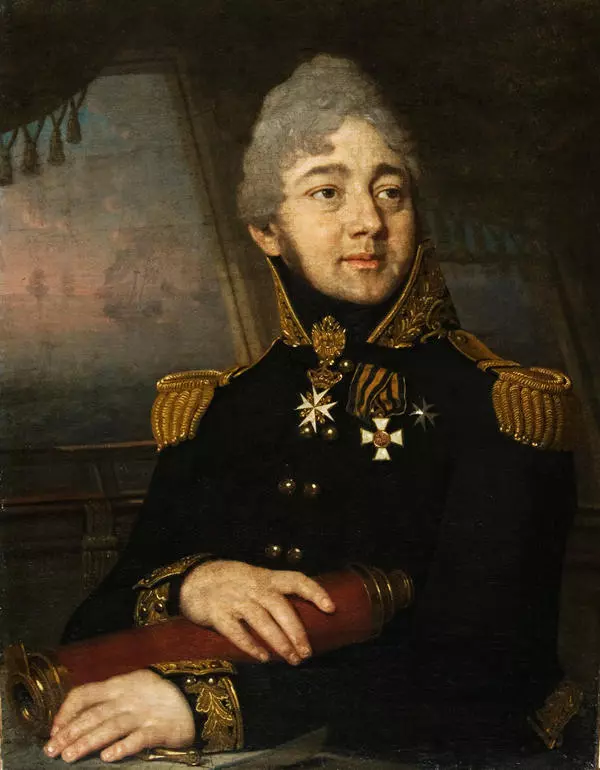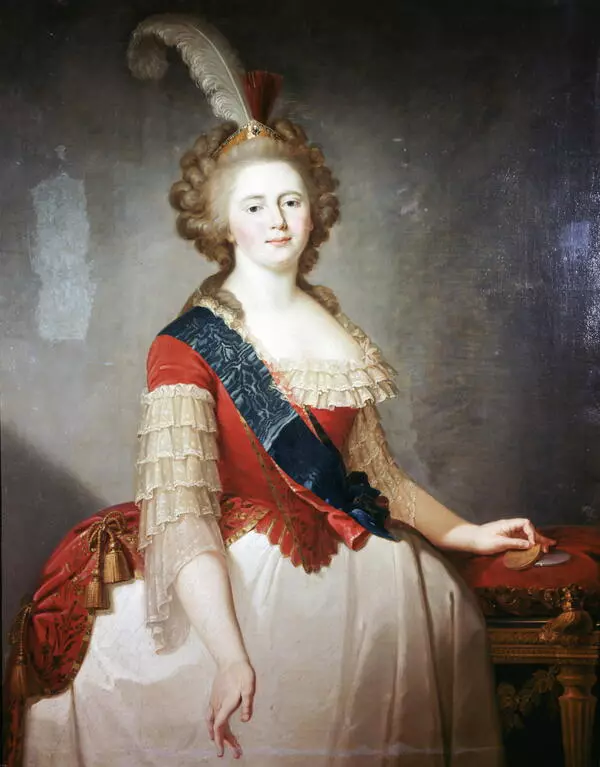The gala portrait of the First Minister of Finance of Russia, Count Alexey Vasilyev, presented at the exhibition is an author’s copy of the work of the same name by Vladimir Borovikovsky, which is currently kept in the State Russian Museum.
Borovikovsky portrayed Alexey Vasilyev in a ceremonial red uniform with epaulets, with all the regalia and orders. In the background on the left, the artist placed a bust of the Procurator-General of the Senate, Prince Alexander Vyazemsky, who supervised Vasilyev in 1764–1793.
Alexey Vasilyev was born on February 28, 1742, in St. Petersburg. His family was noble but not by birth. Vasilyev’s grandfather served as chief secretary of the Admiralty Board, and his father was a senate secretary.
Vasilyev studied in the College of Cadets under the Senate Chancellery. He served as a recorder in the Chancellery of the Senate and became the Secretary of the Procurator-General in 1762. Since 1764, he was appointed a manager of the Office of the Procurator-General, Alexander Vyazemsky.
Vasilyev worked in the Commission for the Nationwide Salary Book, the organization of the Treasury Chambers, and the transformation of the Expedition of state revenues — one of the central financial institutions of the country. As a result, he was able to put the taxation in Russia in order.
Since 1781, Vasilyev became a State Councilor and managed the newly established Office for the Audit of public accounts. When the Procurator-General Vyazemsky was ill, Vasilyev personally reported to the Empress on the affairs of the State Treasurer.
In 1793, as a Privy Counselor, Vasilyev was appointed a chief director of the Medical College. He managed to expand its activities without increasing its expenditure, to transform the administrative structure and improve the material base of the medical unit in Russia.
In 1796, under Paul I, Vasilyev was appointed state treasurer. In this position, he developed a scheme of recoining, which allowed increasing the exchange rate of banknotes. Due to a conflict with Paul I’s valet Count Ivan Kutaisov, Vasilyev was dismissed from all posts in November 1800, however, he was brought back by Emperor Alexander I in March the following year.
In 1802, Vasilyev was appointed Finance Minister. During his work, he almost single-handedly created the financial system of Russia, introduced accountability for businesses, significantly reduced the national debt, and never raised taxes for the people. He led the development of a new repurchase law, which limited the number of drinking houses and forbade tax farmers to keep taverns.
Vasilyev entered high society through his marriage to Princess Varvara Urusova, a relative of his patron Vyazemsky. The couple had two daughters, Catherine and Maria.
Alexey Vasilyev died on August 15, 1807, in St. Petersburg and was buried in the Lazarevsky cemetery of the Alexander Nevsky Lavra.
Borovikovsky portrayed Alexey Vasilyev in a ceremonial red uniform with epaulets, with all the regalia and orders. In the background on the left, the artist placed a bust of the Procurator-General of the Senate, Prince Alexander Vyazemsky, who supervised Vasilyev in 1764–1793.
Alexey Vasilyev was born on February 28, 1742, in St. Petersburg. His family was noble but not by birth. Vasilyev’s grandfather served as chief secretary of the Admiralty Board, and his father was a senate secretary.
Vasilyev studied in the College of Cadets under the Senate Chancellery. He served as a recorder in the Chancellery of the Senate and became the Secretary of the Procurator-General in 1762. Since 1764, he was appointed a manager of the Office of the Procurator-General, Alexander Vyazemsky.
Vasilyev worked in the Commission for the Nationwide Salary Book, the organization of the Treasury Chambers, and the transformation of the Expedition of state revenues — one of the central financial institutions of the country. As a result, he was able to put the taxation in Russia in order.
Since 1781, Vasilyev became a State Councilor and managed the newly established Office for the Audit of public accounts. When the Procurator-General Vyazemsky was ill, Vasilyev personally reported to the Empress on the affairs of the State Treasurer.
In 1793, as a Privy Counselor, Vasilyev was appointed a chief director of the Medical College. He managed to expand its activities without increasing its expenditure, to transform the administrative structure and improve the material base of the medical unit in Russia.
In 1796, under Paul I, Vasilyev was appointed state treasurer. In this position, he developed a scheme of recoining, which allowed increasing the exchange rate of banknotes. Due to a conflict with Paul I’s valet Count Ivan Kutaisov, Vasilyev was dismissed from all posts in November 1800, however, he was brought back by Emperor Alexander I in March the following year.
In 1802, Vasilyev was appointed Finance Minister. During his work, he almost single-handedly created the financial system of Russia, introduced accountability for businesses, significantly reduced the national debt, and never raised taxes for the people. He led the development of a new repurchase law, which limited the number of drinking houses and forbade tax farmers to keep taverns.
Vasilyev entered high society through his marriage to Princess Varvara Urusova, a relative of his patron Vyazemsky. The couple had two daughters, Catherine and Maria.
Alexey Vasilyev died on August 15, 1807, in St. Petersburg and was buried in the Lazarevsky cemetery of the Alexander Nevsky Lavra.

